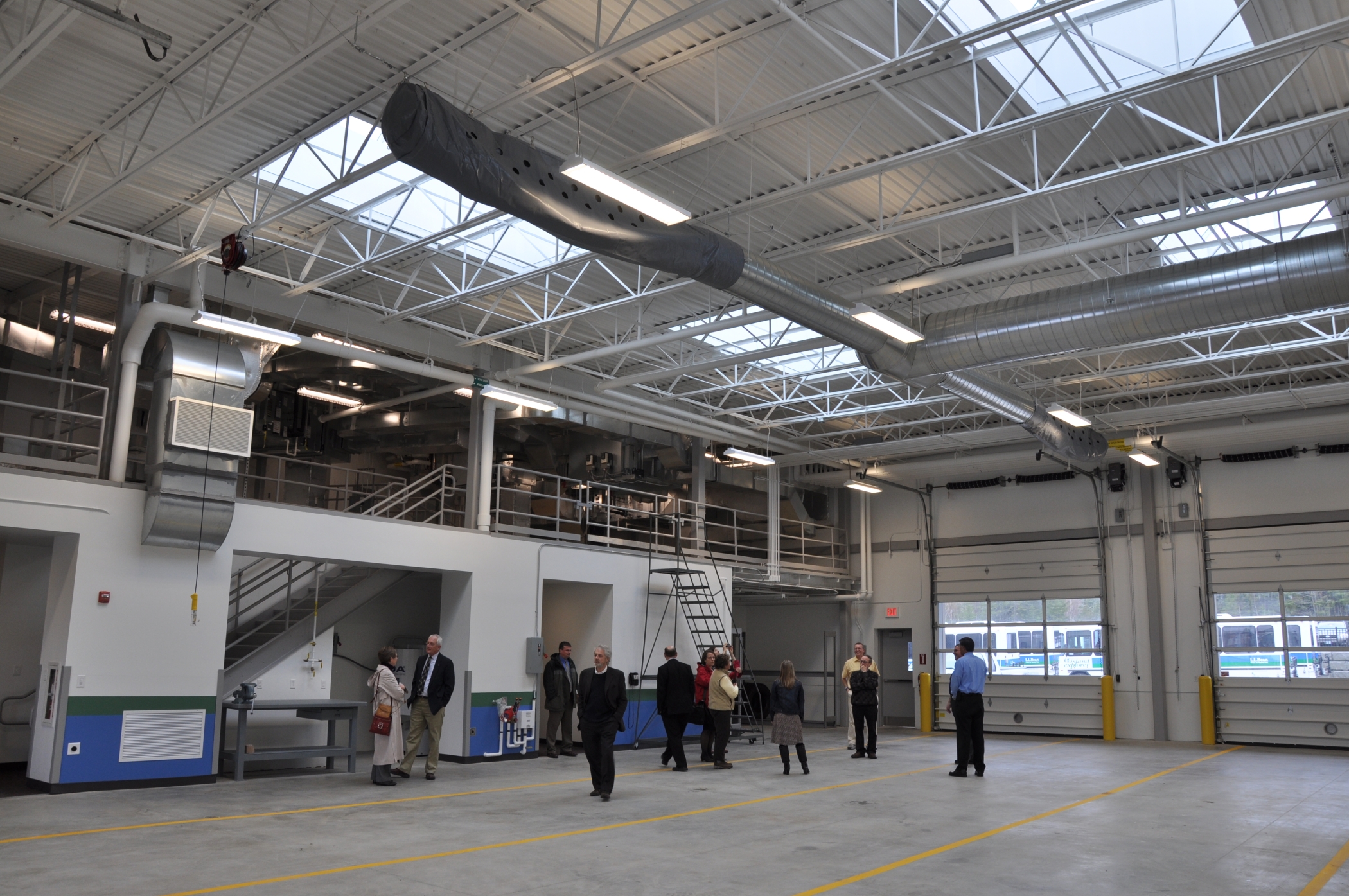Thornton Tomasetti announced that the Acadia Gateway Center administrative and maintenance facility has received LEED Gold Certification. Fore Solutions, the green building consulting company acquired by Thornton Tomasetti in 2012, provided LEED consulting services for the project located in Trenton, Maine at the gateway to Acadia National Park, one of the most visited national parks in the United States.
Fore Solutions was hired by the mechanical engineer on this project, Allied Engineering in Portland Maine, to provide LEED consulting. In this role, Fore Solutions reviewed the energy model, tracked compliance with LEED throughout design and construction and reviewed and submitted LEED documentation to the Green Building Certification Institute.
The Acadia Gateway Center administrative and maintenance facility is the first phase of a multi-phased project to implement a Transportation Demand Management Plan for Acadia National Park in order to reduce automobile traffic on Mount Desert Island. Phase I of the project consists of a 22,000-square-foot center located on Route 3 in Trenton, Maine that will function first as a bus maintenance and storage facility for the seasonal Island Explorer bus system and as a summertime park-and-ride parking lot for people who want to ride the propane-powered buses onto Mount Desert Island.
The second phase will include a visitor center and intermodal facility for the Island Explorer bus service.
Key points:
- This $14.7-million facility was funded through a combination of federal and state sources, including $11.6 million from the Federal Transit Administration.
- The Acadia Gateway Center is anticipated to reduce more than 10 million vehicle miles per year with the Island Explorer buses. Local bus routes will stop at the park and ride on-site to connect building visitors and staff to the surrounding area. Preferred parking for fuel-efficient vehicles is being provided for employees and visitors.
- Water used to wash buses is collected, filtered and reused – reducing water demand by 88%. No irrigation will be used on-site and temporary irrigation will only be provided for one year.
- The project demonstrates a 38.3% improvement in the building performance rating compared to the baseline building performance in ASHRAE-90.1-2004. Energy efficiency measures include an improved thermal envelope, high-efficiency glazing, reduced interior lighting power density and high-efficiency HVAC systems.
- Solar collectors are being used on the project to pre-heat domestic water for the domestic hot water system. Roof materials with a high SRI (Solar Reflectance Index) value have been installed on the roof.
- Materials with recycled content and local materials were used in the project wherever possible, and 70% of construction waste was diverted from landfills.
- Low-emitting adhesives, sealants, paints, carpet and composite wood materials are being used in the project.
- Accessible temperature and lighting controls have been installed for building occupants. +
Related Stories
| Nov 15, 2010
Gilbane to acquire W.G. Mills, Inc.
Rhode Island-based Gilbane Building Company announced plans to acquire W.G. Mills, Inc., a construction management firm with operations based in Florida. The acquisition will dramatically strengthen Gilbane’s position in Florida’s growing market and complement its already established presence in the southeast.
| Nov 11, 2010
Saint-Gobain to make $80 million investment in SAGE Electrochromics
Saint-Gobain, one of the world’s largest glass and construction material manufacturers, is making a strategic equity investment in SAGE Electrochromics to make electronically tintable “dynamic glass” an affordable, mass-market product, ushering in a new era of energy-saving buildings.
| Nov 11, 2010
Saint-Gobain to make $80 million investment in SAGE Electrochromics
Saint-Gobain, one of the world’s largest glass and construction material manufacturers, is making a strategic equity investment in SAGE Electrochromics to make electronically tintable “dynamic glass” an affordable, mass-market product, ushering in a new era of energy-saving buildings.
| Nov 11, 2010
USGBC certifies more than 1 billion square feet of commercial space
This month, the total footprint of commercial projects certified under the U.S. Green Building Council’s LEED Green Building Rating System surpassed one billion square feet. Another six billion square feet of projects are registered and currently working toward LEED certification around the world. Since 2000, more than 36,000 commercial projects and 38,000 single-family homes have participated in LEED.
| Nov 10, 2010
$700 million plan to restore the National Mall
The National Mall—known as America’s front yard—is being targeted for a massive rehab and restoration that could cost as much as $700 million (it’s estimated that the Mall has $400 million in deferred maintenance alone). A few of the proposed projects: refurbishing the Grant Memorial, replacing the Capitol Reflecting Pool with a smaller pool or fountain, reconstructing the Constitution Gardens lake and constructing a multipurpose visitor center, and replacing the Sylvan Theater near the Washington Monument with a new multipurpose facility.
| Nov 9, 2010
Just how green is that college campus?
The College Sustainability Report Card 2011 evaluated colleges and universities in the U.S. and Canada with the 300 largest endowments—plus 22 others that asked to be included in the GreenReportCard.org study—on nine categories, including climate change, energy use, green building, and investment priorities. More than half (56%) earned a B or better, but 6% got a D. Can you guess which is the greenest of these: UC San Diego, Dickinson College, University of Calgary, and Dartmouth? Hint: The Red Devil has turned green.
| Nov 9, 2010
12 incredible objects being made with 3D printers today
BD+C has reported on how 3D printers are attracting the attention of AEC firms. Now you can see how other creative types are utilizing this fascinating printing technology. Among the printed items: King Tut’s remains, designer shoes, and the world’s smallest Rubik’s Cube.
| Nov 9, 2010
U.S. Army steps up requirements for greening building
Cool roofs, solar water heating, and advanced metering are among energy-efficiency elements that will have to be used in new permanent Army buildings in the U.S. and abroad starting in FY 2013. Designs for new construction and major renovations will incorporate sustainable design and development principles contained in ASHRAE 189.1.









